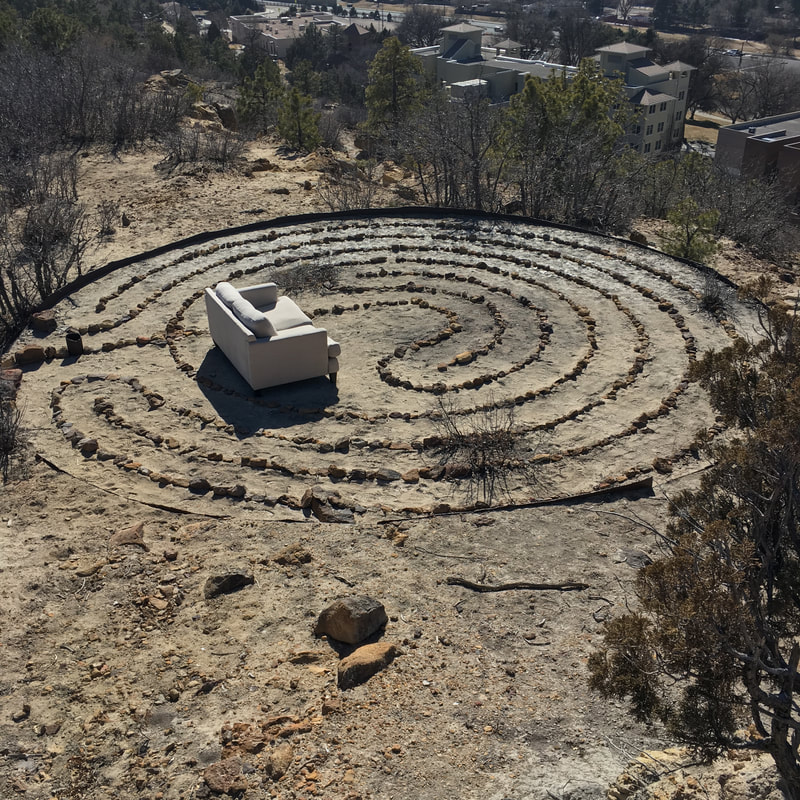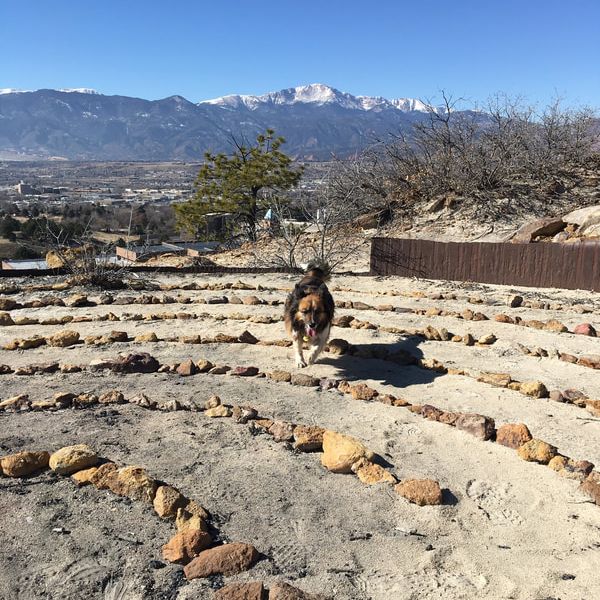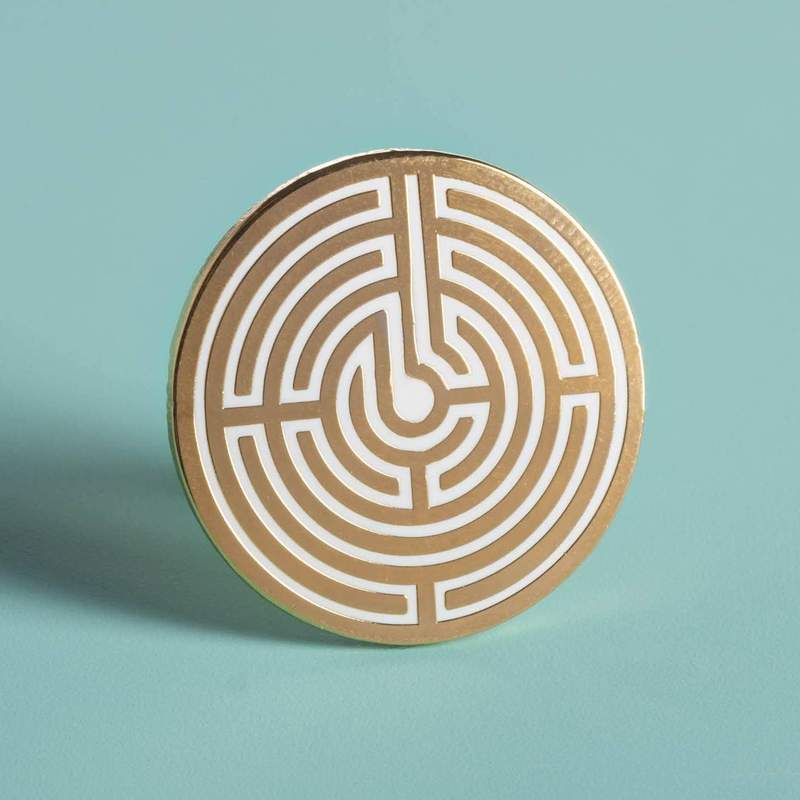I frequently walk a trail through the bluffs near my home. It rises into the Austin Bluffs behind the University of Colorado at Colorado Springs (UCCS) which is built on the site of a former tuberculosis hospital. Some remnants of the original facility remain, notably the base of a water tank. The tank was removed ages ago, apparently by cutting torch, leaving a low ragged steel edge in a large circular footprint.
Much more recently, a new feature appeared there: a rock labyrinth path. And a couch.
Much more recently, a new feature appeared there: a rock labyrinth path. And a couch.
I'll leave the discussion of the effort this took for another time. (It is a college campus, after all.)
I do take advantage of it on some walks. The focus and time necessary to cover the path helps take me out of whatever hectic mindset I might have. And this one leads to a comfortable seat with a lovely view.
I do take advantage of it on some walks. The focus and time necessary to cover the path helps take me out of whatever hectic mindset I might have. And this one leads to a comfortable seat with a lovely view.
But this labyrinth made me think of another I saw recently.
This pin commemorates Rear Admiral Grace Hopper, pioneering computer scientist and educator. She dedicated her life to educating people about computers and how they work. Her lectures were noted for the "nanosecond wires" she carried and displayed. These 11.8" long wires represented the farthest distance an electron can travel in a nanosecond (1 x 10^-9 sec). The white line on this enamel pin is 11.8 inches long.
Such timing considerations are crucial to high speed computation, yet most of us have very little awareness of the amazing science behind our everyday digital devices. We can thank Admiral Hopper in part for them.
And I love that it is represented as a labyrinth. Not just a convenient way to package a length in a compact volume but also a way to make us slow down to appreciate things.
Such timing considerations are crucial to high speed computation, yet most of us have very little awareness of the amazing science behind our everyday digital devices. We can thank Admiral Hopper in part for them.
And I love that it is represented as a labyrinth. Not just a convenient way to package a length in a compact volume but also a way to make us slow down to appreciate things.



 RSS Feed
RSS Feed
